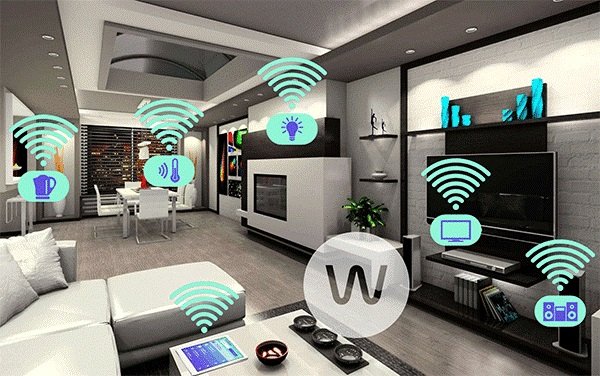Imagine returning home from a long day at work, and as you pull up to your driveway, your porch lights automatically turn on to welcome you. Inside, the air is just right; your smart thermostat has adjusted the temperature to your preferred setting. A soft voice prompts you it’s your home assistant suggesting some soothing music to unwind. This futuristic scenario, once the stuff of science fiction, is now a reality for homeowners looking to make their living spaces more convenient, secure, and comfortable. Welcome to the immersive world of smart home solution.
Understanding the Smart Revolution
Smart home technology integrates various devices and systems within your home to provide an automated, intelligent environment that you can often control from a single app or device. These systems usually employ Internet of Things (IoT) technology, where devices are connected to the internet and to one another, communicating and sharing data to improve efficiency and user experience.
Smart home solutions typically include components like smart sensors, networked appliances, and other devices that can operate autonomously, or under the guidance of a homeowner. The beauty of modern smart home systems is their flexibility and ability to scale, allowing homeowners to start with a single device — like a smart speaker — and expand to include hundreds, seamlessly functioning in harmony.
Benefits Galore for New-Age Homeowners
The lure of smart home solutions is the bouquet of benefits they offer. Homeowners find enhanced convenience with the ability to control and monitor different home systems from virtually anywhere. The energy efficiency aspect is significant too, with smart thermostats and lighting systems adjusting usage based on occupancy or ambient conditions, leading to potential savings on utility bills.
Then there’s the critical component of safety and security. From smart locks that send you notifications about who’s entering and leaving your home, to cameras that keep a vigilant eye on the premises, these solutions offer not just peace of mind, but actionable insights in real-time. Enhanced comfort is another draw, with features like smart shades that can regulate natural light or smart showers that remember your preferred temperature and pressure settings.
Delving into the Tech Marvels
When it comes to smart home technology, devices and systems are as varied as the needs of homeowners. Here are some of the most popular devices and systems that you should consider for your smart home:
Smart Thermostats
From learning your schedule to helping you reduce energy usage, smart thermostats like the Nest or ecobee can deliver significant benefits in terms of comfort and savings.
Smart Lighting Solutions
Systems like Philips Hue or Lutron allow you to control the ambiance of your home with the flick of a switch or a voice command.
Home Security and Monitoring
Brands such as Ring, Arlo, and Google Nest offer a range of solutions from video doorbells to comprehensive home security systems.
Voice Assistants and Controllers
Devices like Amazon Echo or Google Nest Hub serve as the command center for all your smart home devices, offering voice-activated control and information.
An Action Plan for Smart Implementation
Eager to get started on your smart home project? Here’s a step-by-step approach to build the smart home of your dreams.
1. Assessing Your Needs and Goals
What are the pain points or the enhancements you’re looking for in your home? Are you more interested in convenience, security, energy savings, or a mix of these? Identifying your goals will help you prioritize products and systems.
2. Deep Diving into Research
There are thousands of products and systems available, and not all will be suitable for your home or budget. Research is key. Read reviews, compare features, and check for compatibility with other devices you might want to add in the future.
3. The Nuts and Bolts of Installation and Setup
The fun part is finally setting up your devices. Familiarize yourself with the manufacturer’s guides and watch installation videos if available. Take your time and do it right — you don’t want to set up a smart lock incorrectly!
4. The Art of Troubleshooting
No tech setup is without its hiccups. Understand the common issues related to your devices, like connectivity problems, and learn how to address them. Often, a simple reset can do the trick.
Integrating and Scaling Your Smart System
The true potential of a smart home is realized when different devices work in sync. Ensure compatibility and gradually integrate new devices as you become more comfortable with the technology.
Looking to the Future
The field of smart home technology is rapidly evolving, and staying abreast of the latest trends can help you future-proof your investment. Artificial Intelligence (AI) is playing an increasing role, with smart systems getting better at learning your habits and preferences over time. Coupled with advancements in IoT connectivity and a growing focus on sustainability, the smart home of tomorrow will be even more intuitive and integrated.
Conclusion
Smart home solutions offer a modern and proactive approach to managing your living space. By starting small and gradually making additions, you can tailor a system that brings value to your daily life. The benefits are numerous — from reducing your environmental footprint to adding an extra layer of security. The world of smart home technology is not just for the tech-savvy; it’s a practical and beneficial enhancement for anyone looking to add a touch of future-proofing to their home sweet home.
Ready to make the leap into smart home technology? This guide is just the beginning of the endless possibilities for making your home intelligent. With every step of this comprehensive guide, you inch closer to a living space that responds to your needs before you even articulate them.
